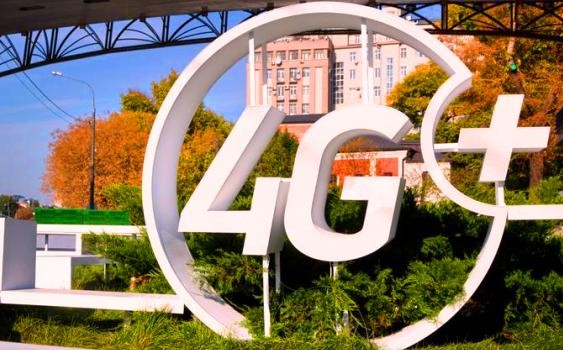When you’re looking at buying a new phone, you might find that there are way too many acronyms to choose from, between CDMA, GSM, LTE, and WiMax, and the list goes on. Instead, it can be easier to focus simply on the differences in these networks as they apply to you directly. The simplest explanation is that the “G” in 4G stands for generation, because 4G is the fourth generation of mobile data technology, as defined by the radio sector of the International Telecommunication Union (ITU-R). LTE stands for “Long Term Evolution” and applies more generally to the idea of improving wireless broadband speeds to meet increasing demand.
What is 3G?
3G actually stands for “third generation”, as it is the third type of access technology that has been made widely commercially available for connecting mobile phones.
The first generation of mobile phones was launched in the 1980s, and transmitted across an analogue signal; these phones were large, brick-like devices that were often kept in a vehicle as they were impractical and inconvenient to carry around.
They were supplanted by the second generation in the 1990s, which now used a more reliable digital signal, and enabled the use of text messaging, or SMS (Short Message Service). However, the technology was still not robust or fast enough to deal with the thousands, and then millions, of consumers who wanted to use mobile phones; the signal could not carry enough data simultaneously, and there were many areas the signal did not cover. There was also a rapidly growing demand for transmitting data – using email and accessing the internet – across mobiles, which 2G was just not fast or reliable enough to manage. An intermediate technology – sometimes called EDGE or 2.5G – came next, but the technology rapidly moved on towards proper 3G.
What is 4G?
4G services should make it much quicker to surf the web on your mobile, tablets and laptops – speeds will be nearer to what you currently experience with home broadband.
Because of this, 4G is ideally suited for services which demand more capacity like video streaming, mapping and social networking sites.
For the typical user, download speeds of initial 4G networks could be around 5-7 times those for existing 3G networks.
This means a music album taking 20 minutes to download on a 3G phone and just over 3 minutes on 4G. This is based on existing 3G speeds being 1Mbit/s on average and 4G speed being 6Mbit/s (average of 5 and 7 times faster).
What is LTE?
Long Term Evolution (LTE) is a 4G wireless broadband technology developed by the Third Generation Partnership Project (3GPP), an industry trade group.
3GPP engineers named the technology “Long Term Evolution” because it represents the next step (4G) in a progression from GSM, a 2G standard, to UMTS, the 3G technologies based upon GSM. LTE provides significantly increased peak data rates, with the potential for 100 Mbps downstream and 30 Mbps upstream, reduced latency, scalable bandwidth capacity, and backwards compatibility with existing GSM and UMTS technology. Future developments to could yield peak throughput on the order of 300 Mbps.
The upper layers of LTE are based upon TCP/IP, which will likely result in an all-IP network similar to the current state of wired communications. LTE will support mixed data, voice, video and messaging traffic. LTE uses OFDM (Orthogonal Frequency Division Multiplexing) and, in later releases, MIMO (Multiple Input Multiple Output) antenna technology similar to that used in the IEEE 802.11n wireless local area network (WLAN) standard. The higher signal to noise ratio (SNR) at the receiver enabled by MIMO, along with OFDM, provides improved coverage and throughput, especially in dense urban areas.
LTE is scheduled to be launched commercially in 2010 by Verizon Wireless and AT&T Wireless. T-Mobile and Alltel have also announced plans to roll out 4G capabilities based on LTE. These networks will compete with Clearwire’s WiMAX for both enterprise and consumer broadband wireless customers. Outside of the US telecommunications market, GSM is the dominant mobile standard, with more than 80% of the world’s cellular phone users. As a result, HSDPA and then LTE are the likely wireless broadband technologies of choice for most users. Nortel and other infrastructure vendors are focusing significant research and development efforts on the creation of LTE base stations to meet the expected demand. When implemented, LTE has the potential to bring pervasive computing to a global audience, with a wire-like experience for mobile users everywhere.
Speed
So the real question is, can you feel a difference between 4G and LTE networks? Is the speed of loading a page or downloading an app on your handheld a lot faster if you have LTE technology built in? Probably not. While the difference between slower 3G networks and new 4G or LTE networks is certainly noticeably faster, most of the 4G and “true 4G” networks have upload and download speeds that are almost identical. For now, LTE is the fastest connection available for wireless networks.
Required Resources
Creating 4G connectivity requires two components: a network that can support the necessary speeds, and a device that is able to connect to that network and download information at high enough speed. Just because a phone has 4G LTE connectivity inside doesn’t mean you can get the speeds you want, in the same way that buying a car that can drive 200 MPH doesn’t mean you can go that fast on a 55 MPH freeway.
Before carriers were able to truly offer LTE speeds in major areas, they were selling phones that had the capabilities they would need to reach the desired speeds, and afterwards started rolling out the service on a limited scale. Now that LTE service is fairly widespread, this isn’t as much of a problem, but if you don’t live in a major metropolitan area it’s worth checking to make sure you actually need LTE service where you live and work. With the rise in popularity, it’s uncommon for a provider to charge less if you aren’t utilizing the LTE speeds on a regular basis, but you can save money by picking up an older generation smartphone with only 3G or 4G connectivity.
Packet-Switching and Circuit-Switching
No matter what the data is or how fast it’s being transferred, it needs to be packaged and sent so that other points on the network can interpret it. Older networks use circuit-switching technology, a term that refers to the method of communicating. In a circuit-switching system, a connection is established directly to the target through the network, and the entirety of the connection, whether it’s a phone call or a file transfer, happens through that connection.
The advantages of a circuit-switched network include a faster connection time, and less chance of the connection dropping. Newer networks take advantage of packet-switching technology, a modern protocol that takes advantage of the much larger number of connected points across the globe. In a packet-switching network, your information is broken up into small chunks which are then sent to your destination over whatever path is currently the most efficient. If a node drops out of your connection in the circuit-switching networks, you’ll have to reconnect, but in a packet-switching network the next packet will simply hunt for a different path.
A lot of the technology used to create 4G speeds doesn’t have anything to do with voice communication. Because voice networks still use circuit-switching technology, it became necessary to reconcile the difference between older and newer network structures. A few different methods have been enacted that deal with the issue, and most carriers chose to deploy one of two options that preserved their control over the minutes used.
They do this by either allowing the phone to fall back to circuit-switching standards when used to make or receive a call, or by using packet-switching communication for data and circuit-switching for voice at the same time. The third option is to simply run the voice audio as data over the new LTE networks, a method that most companies have avoided, most likely because it takes away their power to easily charge for voice minutes. Voice over LTE is basically what happens already when you make a Skype call or a Facetime Audio connection to another user, with higher-resolution audio and faster connection speeds.
Related posts:
 Netflix is Coming to Pakistan!
Netflix is Coming to Pakistan!
 InfoMazza.com’s 25 TOP Posts of 2015
InfoMazza.com’s 25 TOP Posts of 2015
 Snapchat is Not Better than Instagram
Snapchat is Not Better than Instagram
 Everything You Need to Know About Hotel Ratings / Stars
Everything You Need to Know About Hotel Ratings / Stars
 10 New Facebook Features That You May Not Have Noticed
10 New Facebook Features That You May Not Have Noticed
 Some Awesome Inventions (Video)
Some Awesome Inventions (Video)
 SUGRU – Fix That Thing (Amazing Invention) – Video
SUGRU – Fix That Thing (Amazing Invention) – Video
 How to Build A “Stealth” Computer Display LCD Using Polarizing Glasses (Video)
How to Build A “Stealth” Computer Display LCD Using Polarizing Glasses (Video)
 What We Have Achieved in Year 2015 (Best of Pakistan) – Part 3 (Photos)
What We Have Achieved in Year 2015 (Best of Pakistan) – Part 3 (Photos)
 Made History in the World of Air Travel, Never Boarded the Way He Boarded
Made History in the World of Air Travel, Never Boarded the Way He Boarded
 12 Most Common Reasons of Divorce
12 Most Common Reasons of Divorce
 BREAKING: Youtube Officially Unblocked in Pakistan
BREAKING: Youtube Officially Unblocked in Pakistan









That was an amazing post. I admire how easy you make it seem. Waiting to read more. Awesome explanation.
Great,
Now I can differentiate between 4G and LTE, thanks for posting..